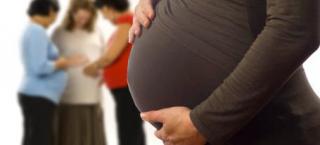- Home
- News
- Screening Matters, Issue 57, December 2016
- Cervical screening in pregnancy and post-partum
News
- Screening Matters Newsletter
- April 2019
- April 2018
- December 2017
- August 2017
- April 2017
- December 2016
- October 2016
- March 2016
- November 2015
- August 2015
- June 2015
- April 2015
- February 2015
- December 2014
- October 2014
- August 2014
- June 2014
- April 2014
- February 2014
- December 2013
- October 2013
- August 2013
- June 2013
- April 2013
- February 2013
Screening Matters
The National Screening Unit newsletter
In this issue:
- Breast and cervical screening support service providers
- National bowel screening programme roll-out
- Primary Human Papilloma Virus (HPV) Screening project update
- Cervical screening in pregnancy and post-partum
- NCSP Register: what to do if a woman declines cervical screening
- Use of sampling devices in cervical screening
- HPV self-sampling trials
- Changes to ordering NSU information resources
- Profile: Promoting discussions with women about screening
- Profile: Championing breast screening in Northland
- Promoting breast and cervical screening
Cervical screening in pregnancy and post-partum

For some women, pregnancy may be the first opportunity to be screened.
Cervical samples can be taken at any time during pregnancy, particularly if the woman:
- has never been screened
- is overdue for a test
- has an abnormal screening history and is due for a test, or
- if there have been specific indications or recommendations for a follow-up test.
If the woman has a normal screening history, a decision may be made to delay screening until three months post-partum.
If indicated, a woman can be safely referred to colposcopy during pregnancy. It’s unlikely that a biopsy or treatment would be recommended when pregnant, but a colposcopic assessment can exclude the presence of invasive cervical cancer and provide reassurance.
The cervibroom is the recommended sampling instrument for all routine screening and screening during pregnancy. Cytobrushes are not to be used. While endocervical cells may not be sampled during pregnancy, this is not a cause for concern if there have been no previous glandular abnormalities.
Once the woman has given birth, cervical screening should be delayed for three months. When cervical screening is performed in the postnatal period, low levels of oestrogen associated with breastfeeding may make the collection or interpretation of the cervical sample unsatisfactory. If this occurs, consider the application of local oestrogen cream or pessaries.
To receive the Screening Matters newsletter by email, fill out our sign-up form.

